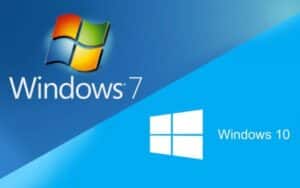 2020 is fast approaching, make sure you have plans to move away from Windows 7 in time.
2020 is fast approaching, make sure you have plans to move away from Windows 7 in time.
Windows 7 has been one of Microsoft’s most popular operating systems since its launch in July 2009. As is the way with these things, they cannot be supported indefinitely and Microsoft has announced January 14th 2020 as the “EOL” or End of Life date. Technically, it went out of full support back in 2015, meaning Microsoft would no longer add new features to the system, but it has been in “Extended Support” since then, meaning critical and security patches are released regularly, until the EOL date.
Microsoft is also using the same deadline for ending support on Windows Server 2008 and 2008 R2.
What does this mean for me?
If your business is using machines with Windows 7, or you have servers running Server 2008, you need to plan to upgrade or replace them. Whilst they will continue to work, they will no longer receive critical security updates.
Even if you have Anti-Virus running on them, this cannot protect against critical bugs with the operating system, so in simple terms, it would be unsafe to continue to use Windows 7 or Server 2008 in production use from January 2020.
Does it really matter?
We would say yes. Distribution of viruses, ransomware and targeted hacking attempts are at an all time high, so we cannot advocate taking risks like this. It could lead to data theft, data loss or other unwanted results from viral or malicious code.
More so if you process credit card information on site – your PCI-DSS compliance would need to be reassessed, and if you are operating on insecure and unsupported computer systems, you are likely to be non-compliant with the rules for processing cards. Similarly if you have adopted a GDPR or data security policy in your business, continuing to use old technology could put you in breach of this.
You may also be subject to insurance requirements which will stipulate that you should take proper measures to keep your computer network secure. As such you could be putting yourself in a position whereby an insurance claim relating to IT security or cyber-liability would not be paid out.
What do I need to do?
Contact us, we’ll do a free audit to advise you of any Windows 7 or Server 2008 machines on your network. If they are decent machines and have been bought recently, they may be of suitable specification to run Windows 10. Microsoft have withdrawn the free offer to upgrade from 7 to 10 so you will probably need to purchase a licence to use Windows 10. If you are technically competent, you may be happy to install it yourself, however we would recommend contacting your IT provider to do this work as it can be problematic, particularly on older machines.
If the machines are more than 3 years old, it usually makes more sense to replace them. This will give you a new, in-warranty machine with Windows 10 included in the cost.








